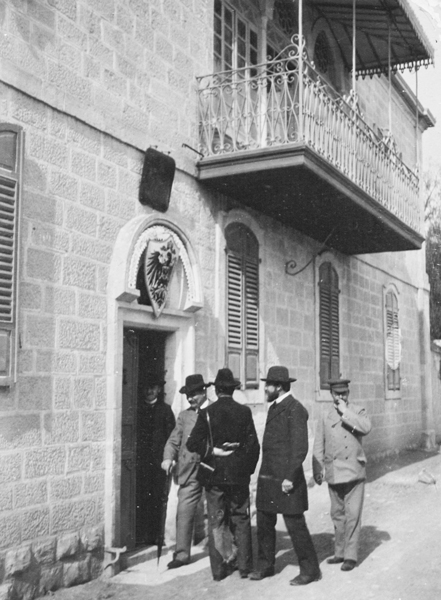The theological faculty of the Ernst-Moritz-Arndt University in Greifswald harbours a certainly internationally almost unique collection of highest scientific interest and standard. The collection is owed to the encyclopaedic and universally scientifically oriented research activities of Gustaf Dalmans (1855 – 1941), who, through facts and pictures, gathered and documented everything that accounted for the land of the Bible in his opinion, especially in the time before World War I, when Palestine still possessed its agrarian character. Today, the collection is located in the Gustaf-Dalman Institute. It was founded in 1920, and carries his name. As first director of the German Protestant Institute for Antique Sciences of the Holy Land, which opened in 1902 in Jerusalem, and up until 1914, he regularly conducted lectures for young theologists from Germany, meanwhile studying the Land of Palestine and the life of its inhabitants. In 1917, Dalman was summoned back to Greifswald, and could bring a little part of his amazing collection with him.
Besides a wide-ranged library concerning the study of the Land of Palestine, the history, the religion and the culture of the Jewish people, the collection includes almost 15.000 glass sheet pictures and photographs as well as stone probes, a collection of woods and ceramics, products for the processing of cereals, archaeological findings, relief maps and clothes. Moreover, the collection also includes several house and acre tools, partly as models, some of them built by Gustaf Dalman himself, and a herbarium including around 2.000 specimens. This is only a small and yet quite representative part of all the elements that Gustaf Dalmans held in his collections in Jerusalem.
What ethnologists, archaeologists, geographs, botanists and mineralogists ever gather for themselves and subject-specifically is assembled here to represent a universal picture. It provides a unique view on the country of Palestine at the beginning of the 20th century. Worldwide scientists benefit from this collection.
Thursday, November 15, 2018
Bilddatenbank des Gustaf-Dalman-Institutes
Collections for the study of the country of Palestine of the Gustaf-Dalman Institute
Subscribe to:
Post Comments (Atom)










 Stumble It!
Stumble It!

No comments:
Post a Comment